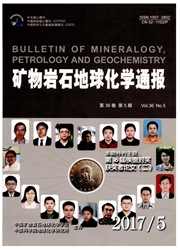

 中文摘要:
中文摘要:
为了解南极半岛中新生代构造岩浆演化及其与南美巴塔哥尼亚的关系,本文综述了南极半岛岩浆岩的分布、时代、岩石成因、构造环境以及巴塔哥尼亚的地质历史。南极半岛可划分出东部冈瓦纳、中部岩浆弧和西部增生杂岩的3个构造域,古生代岩浆作用仅局部出现在东部和中部构造域,而中新生代岩浆作用形成的火山岩和侵入岩构成了中部岩浆弧的主体,并且随时间在南极半岛从东南向西北逐渐迁移、在南设得兰群岛从西南向东北逐渐迁移。南极半岛中新生代的构造演化包括了各构造域在侏罗纪汇聚前的大洋俯冲和岛弧增生、早白垩世各构造域初始汇聚和构造剥蚀、白垩纪中期碰撞造山、晚白垩世-早新生代(~50Ma之前)乔治六世海峡的形成以及~4Ma布兰斯菲尔德海峡弧后盆地的打开。南极半岛与巴塔哥尼亚的地质对比表明,两地区至少在白垩纪以前是相连的。
 英文摘要:
英文摘要:
In order to understand the Mesozoic-Cenozoic tectonomagmatic evolution of the Antarctic Peninsula and its correlation with Patagonia of southernmost South America,this paper briefly overview the distribution,ages,petrogenesis and tectonic settings of magmatic rocks from the Antarctic Peninsula,and geological history of Patagonia. The Antarctic Peninsula region can be divided into three major tectonic domains:( 1) the East Domain related to Gondwanaland,( 2) the Central Domain composed by magmatic arc terrane,and( 3) the West Domain that represents an accretion complex. The Paleozoic magmatic rocks only locally occurs in the East and Central Domains,while the Mesozoic-Cenozoic volcanic and intrusive rocks dominate the Central Domain. Moreover,the Mesozoic- Cenozoic magmatism gradually migrated with time from southeast to northwest in the Antarctic Peninsula and from southwest to northeast in the South Shetland Islands. During the Mesozoic and Cenozoic,the Antarctic Peninsula experienced multiple tectonic movements,including oceanic subduction and island-arc accretion before the Cretaceous convergence for all the three domains,the initial convergence and tectonic erosion among these domains in the Early Cretaceous,collisional orogeny in the mid-Cretaceous,the formation of the George VI Sound before ~ 50 Ma,and the opening of the Bransfield Strait back-arc basin at ~ 4 Ma. The geological comparison between the Antarctic Peninsula and Patagonia suggests that the two regions were connected at least before Cretaceous.
 同期刊论文项目
同期刊论文项目
 同项目期刊论文
同项目期刊论文
 期刊信息
期刊信息
